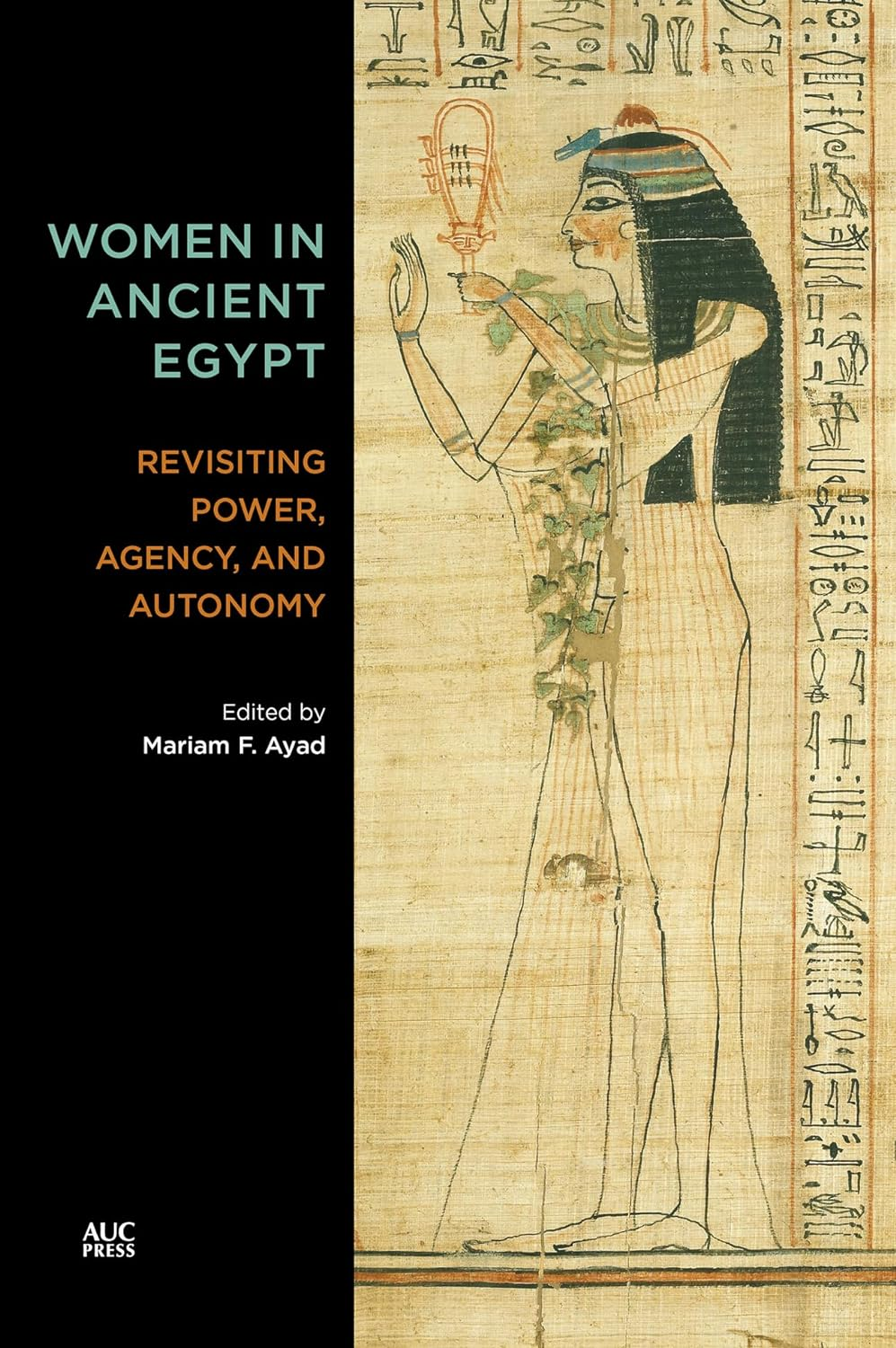
Drawing New Conclusions About the Status of Women in Ancient Egypt
Reviewed by Kyle Pakka
Women in Ancient Egypt: Revisiting Power, Agency, and Autonomy
Mariam F. Ayad, ed. AUC Press, 2022.
With their ability to work outside the home, inherit and dispose of property, initiate divorce, testify in court, and serve on a local town council (qnbt), women in ancient Egypt exercised more legal rights and economic independence than their counterparts throughout antiquity.
In this collection of 24 academic essays, Egyptologists cast fresh light on the lives of women in Ancient Egypt, from the First Dynasty to Late Antiquity in the 5th century CE. Editor Mariam F. Ayad, an Egyptologist at the American University in Cairo argues that gender bias among historians, not a lack of evidence, accounts for an underrepresentation of women’s lives in historical studies of Egypt. The essays correct long-held views regarding women and political power, economics, law, literacy and health. Rather than a chronological overview, each chapter closely examines evidence associated with a specific time or site. A detailed review of carved reliefs suggests that the previously unattributed Fifth Dynasty pyramid complex at Saqqara was built for one of the period’s Egyptian queens. Another chapter, challenging prevailing interpretations about the rule of Hatshepsut a thousand years later, reflects the overall approach of the book. Hatshepsut assumed the mantle of sovereign when her husband died c. 1479 BCE, leaving the throne to their son. Historians generally assumed she usurped power, but evidence shows that, facing a crisis of succession, Hatshepsut stepped up to rule within the traditional religious framework of power. Primarily of interest to other scholars, this collection of essays will intrigue those curious to see the process by which the past reveals its many truths.
You may also be interested in...

Dubai Neighborhood Paves Way for Urban Design Preservation
Architect Peter Jackson and social geographer Anne Coles examine the origins, flowering, decline and restoration of the famed Dubai wind towers.
The Ebb and Flow of History on the Zambezi River
In tracing the past six centuries of history, historian Malyn Hewitt captures the cyclical rise and fall of the river and its people.
Nomadic Chieftain’s Biography Unveils Dynamics of Colonial Expansion
Historian Tetsu Akiyama challenges the narrative that the Kyrgyz were a “static and monotonous ‘traditional’ society’” destined to be subsumed.